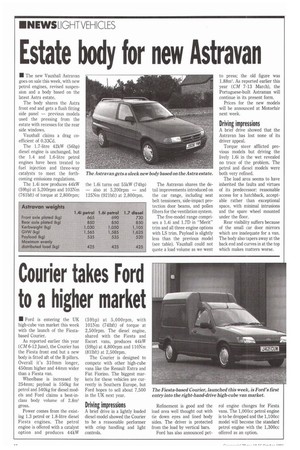Estate body for new Astravan
Page 14

If you've noticed an error in this article please click here to report it so we can fix it.
• The new Vauxhall Astravan goes on sale this week, with new petrol engines, revised suspension and a body based on the latest Astra estate.
The body shares the Astra front end and gets a flush fitting side panel — previous models used the pressing from the estate with recesses for the rear side windows.
Vauxhall claims a drag coefficient of 0.33Cd.
The 1.7-litre 42kW (56hp) diesel engine is unchanged, but the 1,4 and 1.6-litre petrol engines have been treated to fuel injection and three-way catalysts to meet the forthcoming emissions regulations.
The 1.4i now produces 44kW (59hp) at 5,200rpm and 103Nm (761bft) of torque at 2,800rprn; the 1.6i turns out 55kW (74hp) — also at 5,200rpm — and 125Nrn (921bft) at 2,800rpm. The Astravan shares the detail improvements introduced on the car range, including seat belt tensioners, side-impact protection door beams, and pollen filters for the ventilation system.
The five-model range comprises a 1.4i and 1.7D in "Merit" trim and all three engine options with IS trim. Payload is slightly less than the previous model (see table). Vauxhall could not quote a load volume as we went
to press; the old figure was 1.88m3. As reported earlier this year (CM 7-13 March), the Portuguese-built Astramax will continue in its present form.
Prices for the new models will be announced at Motorfair next week.
Driving impressions
A brief drive showed that the Astravan has lost none of its driver appeal.
Torque steer afflicted previous models but driving the lively 1.6i in the wet revealed no trace of the problem. The petrol and diesel models were both very refined.
The load area seems to have inherited the faults and virtues of its predecessor: reasonable access for a hatchback, acceptable rather than exceptional space, with minimal intrusions and the spare wheel mounted under the floor.
Rear visibility suffers because of the small car door mirrors which are inadequate for a van. The body also tapers away at the back end and curves in at the top which makes matters worse.
































































































